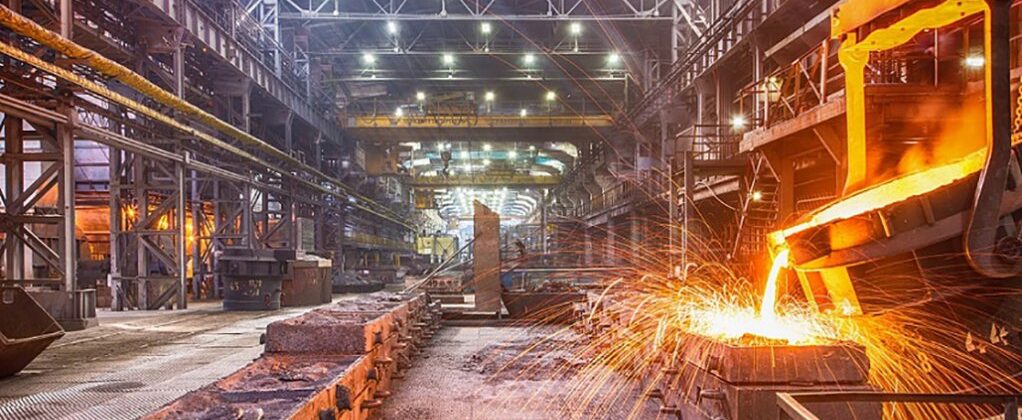by Flextra Engineered Products 0 comment
Stainless steel sector fights for right to supply local parastatal projects
The use of local stainless steel is crucial to driving demand and the subsequent beneficiation of this highly prized metal, but work still needs to be done to cement the correct specifications of South African stainless steel components in key strategic projects, states the Southern African Stainless Steel Development Association (Sassda).
Together with the local demand-creating structures of the Steel Master Plan (SMP), Sassda has identified and placed a focus on various projects that can positively impact on the local conversion of stainless steel.
“We firmly believe that increased local conversion of stainless steel is not just essential, it’s a game-changer for our industry and the national economy. These projects are our industry’s stepping stones to fostering local demand and boosting the stainless steel sector,” states Sassda executive director Michael Basson.
ESKOM TRANSMISSION TOWERS
Based on the need for local components in government projects, Sassda states that a key focus of the SMP Local Demand structures has been on applying strong pressure on State-owned power utility Eskom to engage more openly regarding the supply of transmission towers.
The criteria for allowing local industry to participate in the supply of these items and/or its components and have firm targets for local content is still debated.
In the interim, however, Sassda has seen an opportunity to submit a change in the material specifications to allow for the use of South African 3CR12 stainless steel, which is widely used across the globe in corrosive applications.
This submission by Sassda and its key members – based on lifecycle costing principles – was received favourably by the committee, but still needs to be accepted by Eskom.
BAILEY BRIDGES
Another government project with good potential for the use of stainless steel is the proposed construction of Bailey Bridges in rural areas, states Sassda.
These are used in emergencies or as temporary structures for planned events, and are particularly useful in rural areas in the event of natural disasters like floods.
“During the consultation process with government departments, we once again used the opportunity to submit that 3CR12 stainless steel should be used in corrosive environments to ensure the optimum lifespan of the installations. The submission was received in a positive light and will be taken forward,” reports Basson.
HOLLOWWARE
Sassda’s research also shows that more than 10 000 t of finished holloware products – such as pots, pans and cutlery – are imported into South Africa each year.
Sassda points out that this is in stark contrast to the early 2000s when the local hollowware sector efficiently met 80% of domestic demand. By 2008, this figure plummeted to less than 50% and today it stands at 10%.
“The SMP still sees value in resurrecting the industry and, as such, Sassda has started to research and update the information on local demand and local capacity.
“By determining and potentially addressing the gap, a sizable local demand can be created for stainless steel holloware products in South Africa with job creation attached to this growth,“ adds Basson.
AUTOMOTIVE SECTOR
While investigations are ongoing to ensure the maximum volumes of stainless steel used in the local manufacturing of vehicles, there might also be room for creating more capacity for stainless steel products, according to Sassda
“A major challenge hindering cost-effective production in the hollowware and cutlery industry is the demand for highly efficient automated processes. Fortunately, we see an opportunity for collaboration with the automotive industry, which boasts advanced technology and automation capabilities that can help us overcome this hurdle and revitalise our sector,” Basson explains.
Notably, certain legacy companies in the automotive sector possess large presses which were historically dedicated to automotive production.
As the automotive industry diversifies in response to emerging trends such as electric vehicles, however, these presses are sometimes idle, Sassda points out.
“Together with Naamsa, we’re exploring opportunities to leverage this spare capacity to produce semi-finished holloware components. This strategic alliance aims to empower the hollowware industry by providing access to advanced technology and diversifying production capabilities,” says Basson.
BEER KEGS SECTOR
Sassda notes that there has also been a commitment from the formal brewing industry in South Africa for the procurement and use of locally made beer kegs within the context of competitive pricing and quality.
A local standard for beer kegs has been accepted by the Department of Employment and Labour.
This standard is based on the German equivalent and stipulates stainless steel as a suitable material for the application. The grade used in the food and beverage industry, including beer kegs, is Grade 304 stainless steel.
Western Cape-based component manufacturer Fabrinox was identified by Sassda and the Production Technologies Association of South Africa as a potential pilot producer.
“It is exciting to note that the required technology will be locally developed, built and tested. The local material producer will form part of the project once the production process and manufacturing design are finalised to ensure that the material grades used can conform to the mechanical and other properties required by the manufacturing design,” states Sassda.
Basson reports that the grouping of stakeholders is currently conducting a technology audit and capacity overview, and is also discussing the ownership and future use of the intellectual property to be developed during the project.
This process aims to create world-leading technology and is committing to a continuous development process of the project lifecycle.
“Overall, the potential for stainless steel in these projects is immense. Resurrecting and building these strategic stainless steel industries can lead to substantial demand and create accompanying job opportunities and economic growth,” Basson states.

